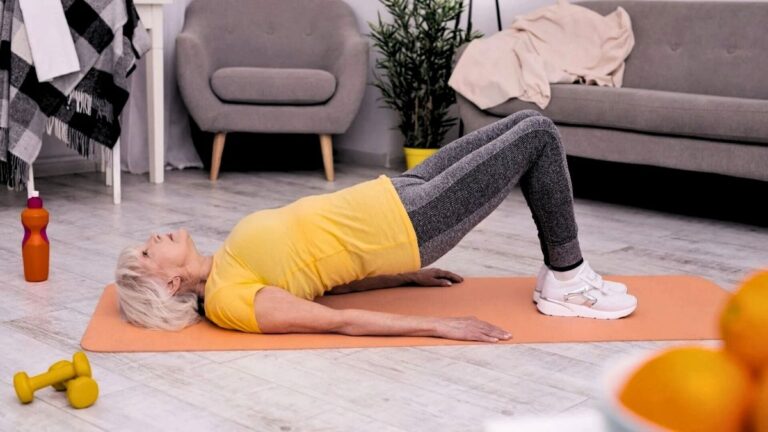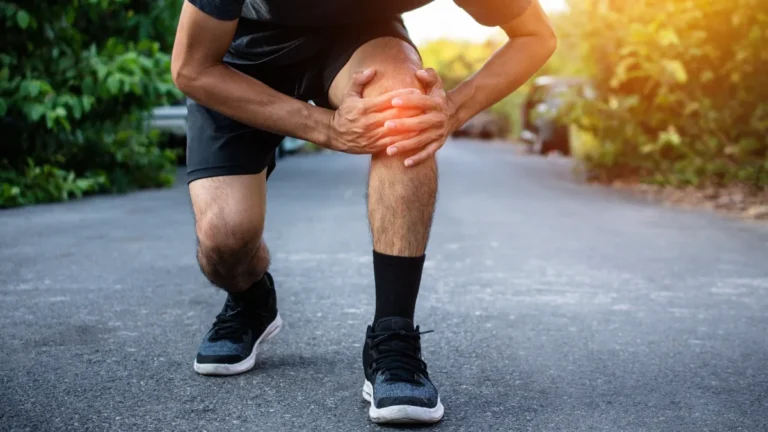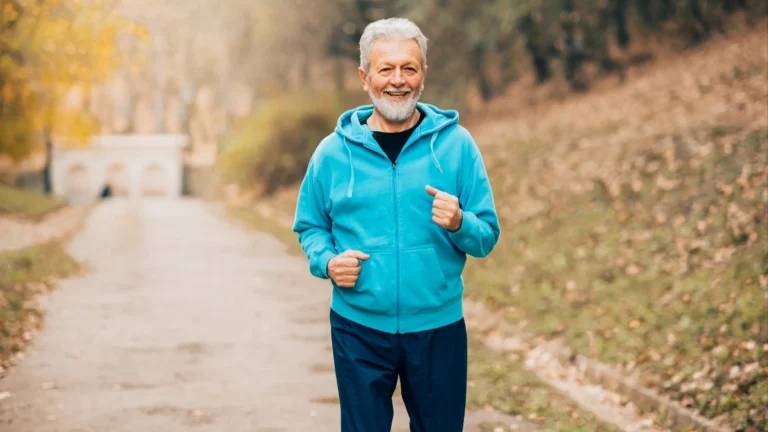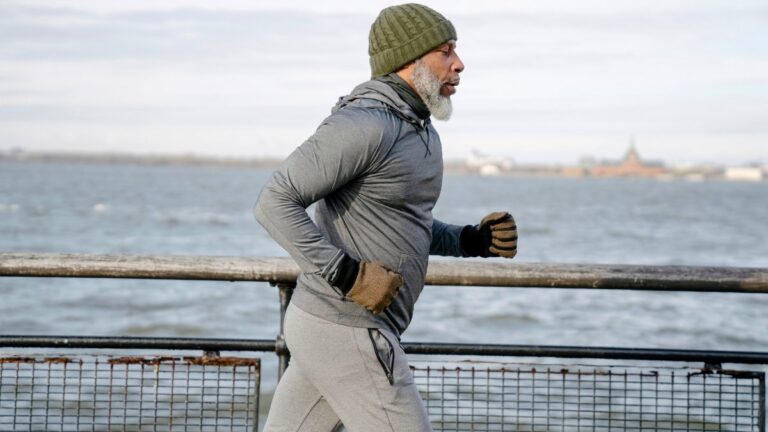Unlock Your Hip Hinges: The Simple Fix for Better Posture, Less Back Pain, and Effortless Walking
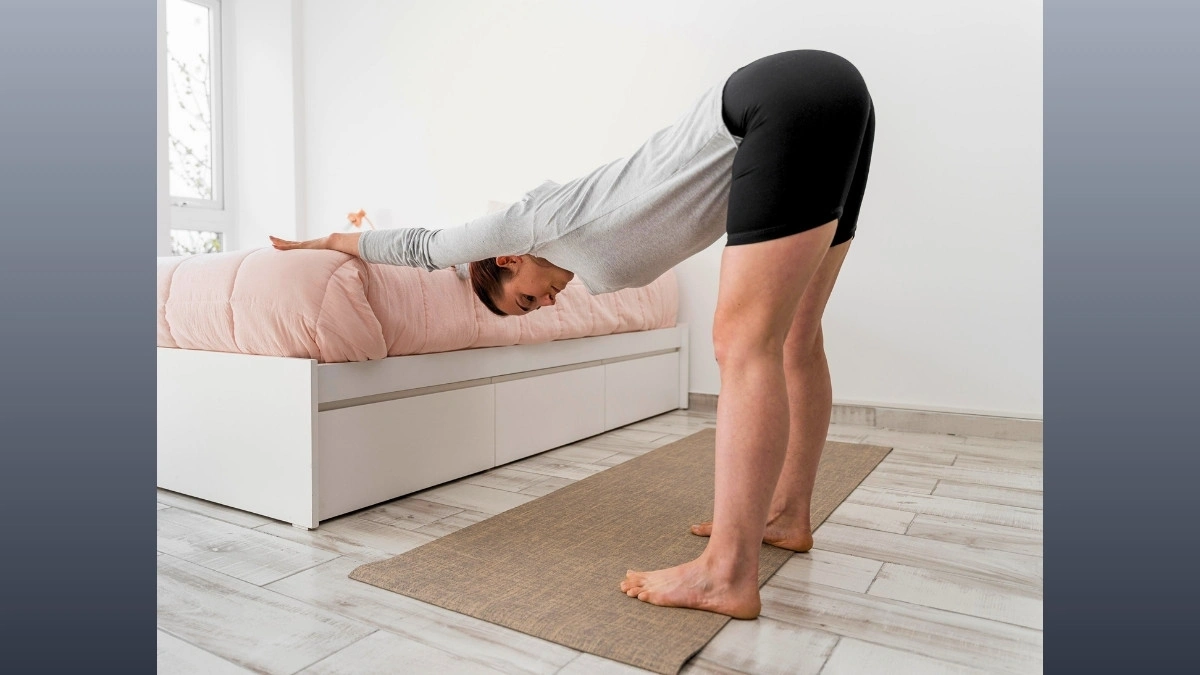
Every day, millions of people struggle with chronic back pain, slouched posture, and stiff movement that makes simple tasks feel exhausting. You bend over to pick up something and your back screams in protest. Walking up stairs leaves you winded and sore.
Your shoulders round forward no matter how hard you try to sit up straight.
This isn’t just about getting older—it’s about losing a fundamental movement pattern that controls your entire body. The problem gets worse each year as your muscles adapt to poor positions and compensatory patterns become deeply ingrained.
The solution isn’t expensive treatments or complicated exercise programs. Hip hinge movement—the simple act of bending at your hips instead of your back—can transform your posture, eliminate pain, and restore effortless mobility.
Master this one movement pattern and watch your entire body change.
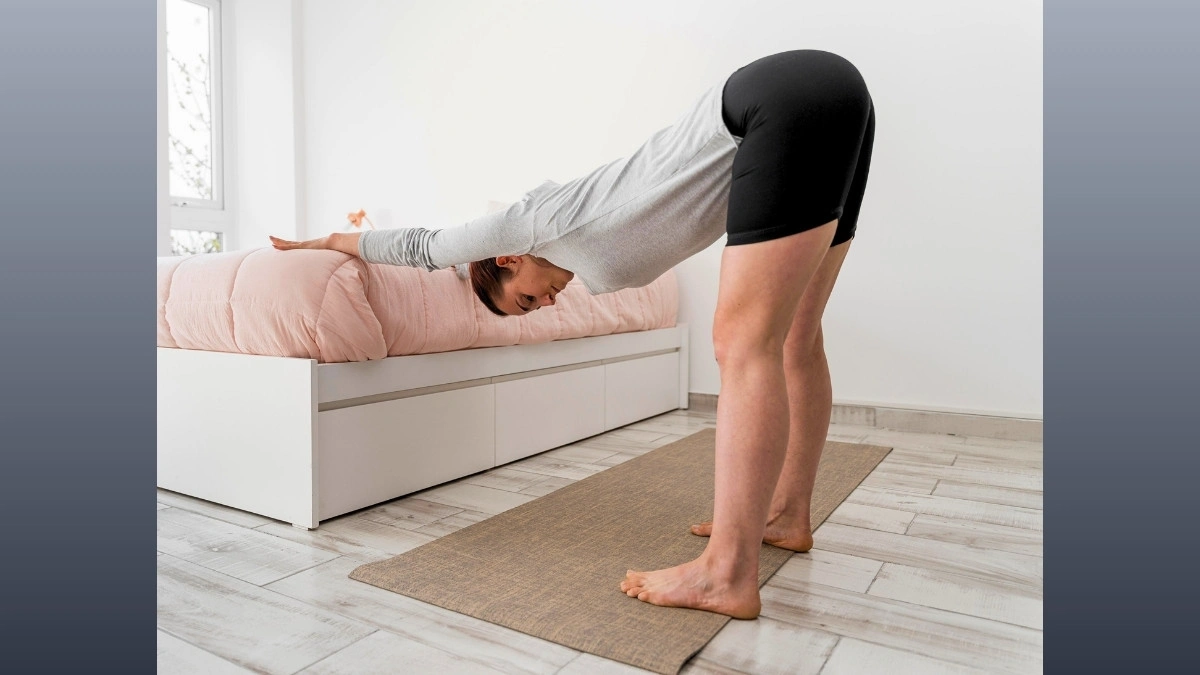
What Is Hip Hinge Movement?
Hip hinge movement means bending forward by pushing your hips backward while keeping your spine straight and strong. Instead of rounding your back like most people do, you fold at your hip joint like closing a book. Your chest stays proud and your shoulders remain back as your hips move away from your body.
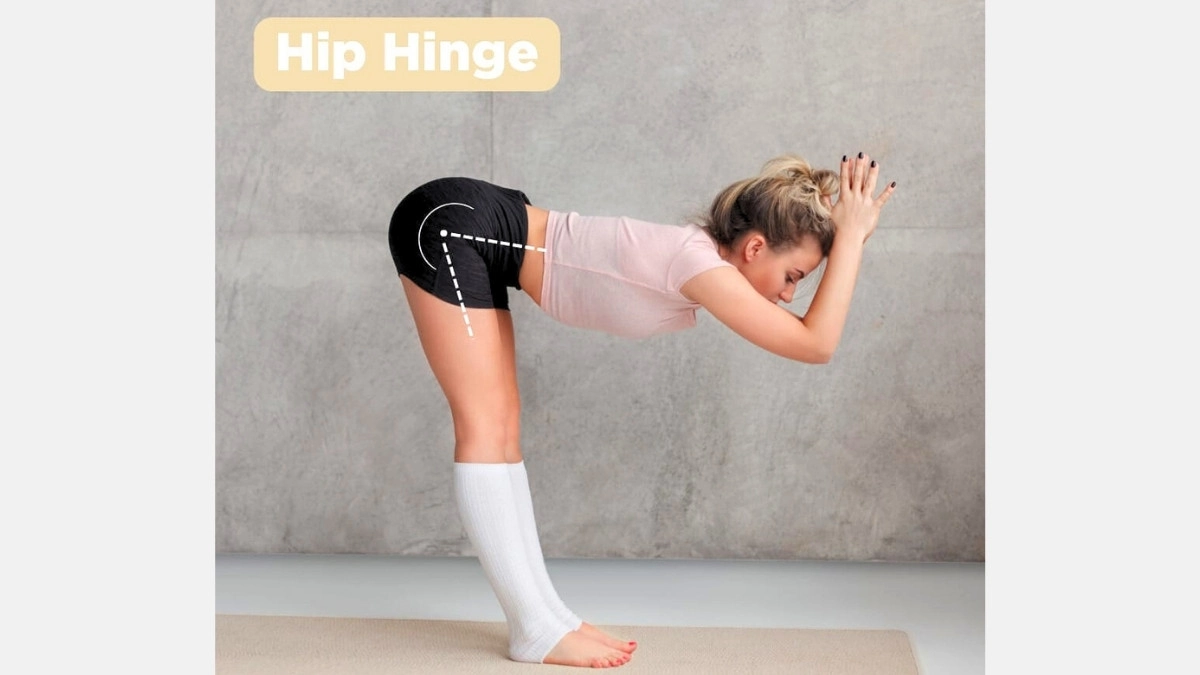
This movement pattern protects your spine and allows your powerful hip muscles to do the work they were designed for. Think of it like a waiter leaning forward to serve a table while keeping their back perfectly straight.
1. The Hidden Movement That Controls Your Entire Body
Most people bend forward from their back instead of their hips. This single mistake affects every movement you make throughout the day. Hip hinging means bending at your hip joint while keeping your spine straight and strong. Picture a waiter carrying a heavy tray who leans forward by pushing his hips back, not by rounding his shoulders.
When you master this movement pattern, your entire body works like a well-oiled machine. Your lower back stops screaming for help. Walking becomes smooth and effortless. Even simple tasks like picking up groceries or tying your shoes feel completely different.
Quick Tips:
- Place your hand on your lower back and bend forward – if your spine curves, you’re doing it wrong
- Think about pushing your hips back toward a wall behind you when bending forward
- Keep your chest proud and shoulders back during any forward bending movement
2. The Anatomy Lesson Your Body Is Begging For
Your hip joint works like a ball and socket, designed for incredible mobility and power. The hip flexors, glutes, hamstrings, and deep core muscles must work together in harmony for proper hip hinging. When one muscle group becomes tight or weak, the others compensate poorly. Your hip flexors often become shortened from sitting, while your glutes fall asleep from lack of use.
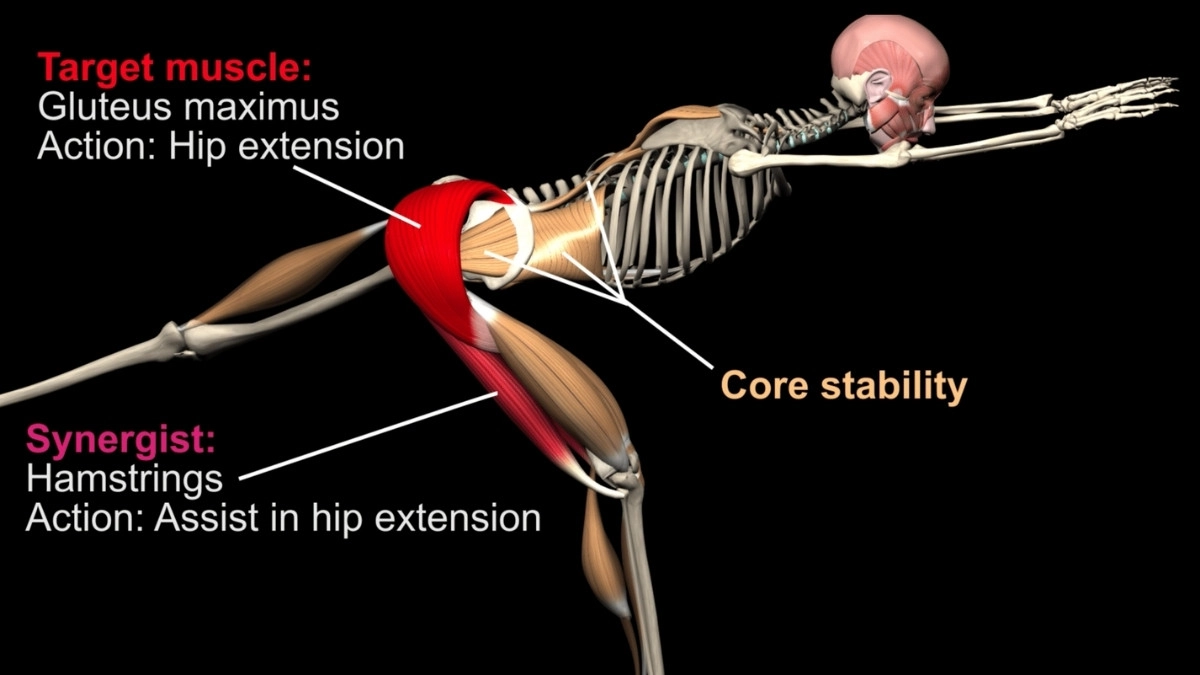
This creates a tug-of-war in your pelvis that throws off your entire movement system. The fascia surrounding these muscles also plays a huge role, acting like plastic wrap that can either support smooth movement or restrict it completely. Understanding this relationship helps you target the right areas for maximum improvement.
Quick Tips:
- Stretch your hip flexors daily by stepping one foot back in a lunge position
- Squeeze your glutes for 5 seconds every hour to wake them up
- Roll a tennis ball under your foot to release fascial tension that travels up your leg
3. The Modern Lifestyle Trap That’s Stealing Your Mobility
Sitting for hours creates a cascade of problems that destroy your natural movement patterns. Your hip flexors shorten and tighten, pulling your pelvis into an unnatural position. Technology makes things worse by encouraging forward head posture and rounded shoulders.
This combination locks your hips and forces your lower back to do work it was never designed to handle. Cars, desks, couches, and even exercise equipment often reinforce these harmful positions. Your body adapts to whatever position you spend the most time in, and for most people, that’s a slouched, hip-locked position.
Breaking free requires conscious effort to counteract these daily habits. Small changes throughout your day can have massive impacts on your movement quality.
Quick Tips:
- Stand up and walk for 2 minutes every 30 minutes of sitting
- Set your computer screen at eye level to prevent forward head posture
- Sleep with a pillow between your knees to keep your hips in neutral alignment
4. The Domino Effect: When Hip Hinges Fail, Everything Else Falls Apart
Poor hip mobility creates a chain reaction that travels throughout your entire body. When your hips can’t move properly, your lower back compensates by bending and twisting beyond its limits.
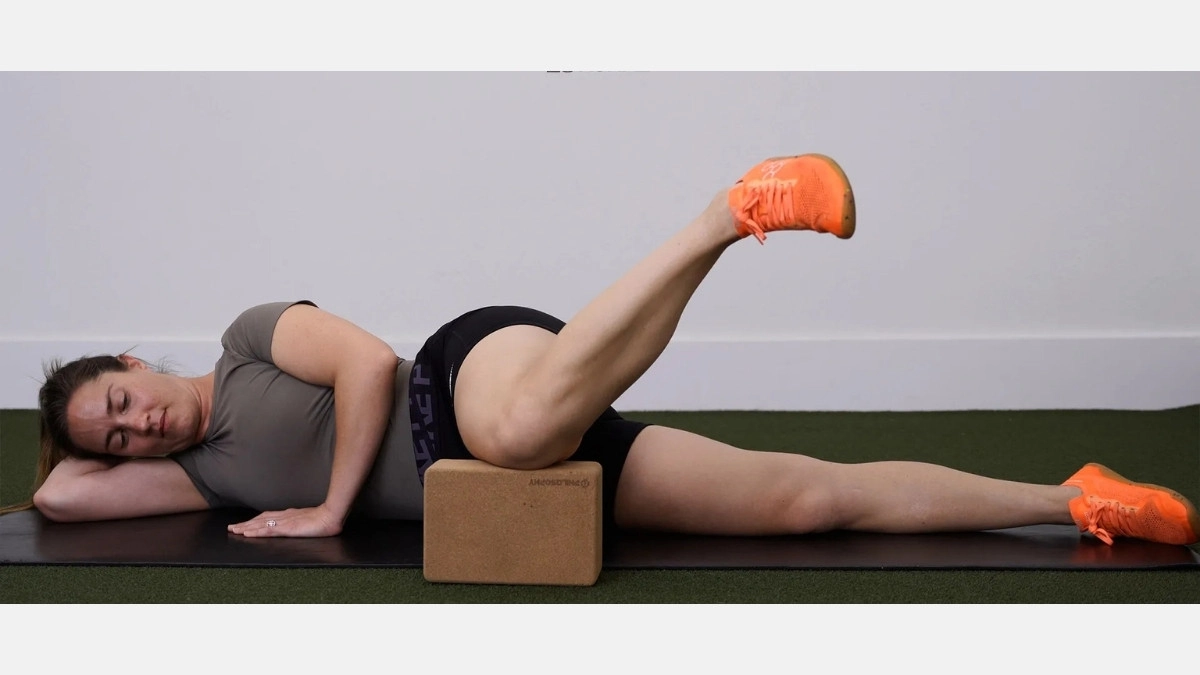
This leads to disc problems, muscle spasms, and chronic pain that seems to come from nowhere. Your neck and shoulders then overwork to maintain balance, creating tension headaches and upper body stiffness. Even your knees and ankles suffer as they try to make up for lost hip movement.
Walking becomes awkward and inefficient, leading to faster fatigue and joint wear. Your breathing patterns change as your ribcage position shifts. This biomechanical breakdown affects everything from your sleep quality to your energy levels throughout the day.
Quick Tips:
- Test your hip mobility by lying on your back and pulling one knee to your chest while keeping the other leg flat
- Notice if one side feels tighter than the other and spend extra time stretching that hip
- Pay attention to which side of your back hurts most – it’s often opposite to your tightest hip
5. The 30-Second Self-Assessment That Reveals Everything
You can evaluate your hip hinge ability right now without any equipment or special training. Stand with your feet hip-width apart and slowly push your hips back as if sitting in a chair behind you. Keep your chest up and your weight on your heels as you lower down.
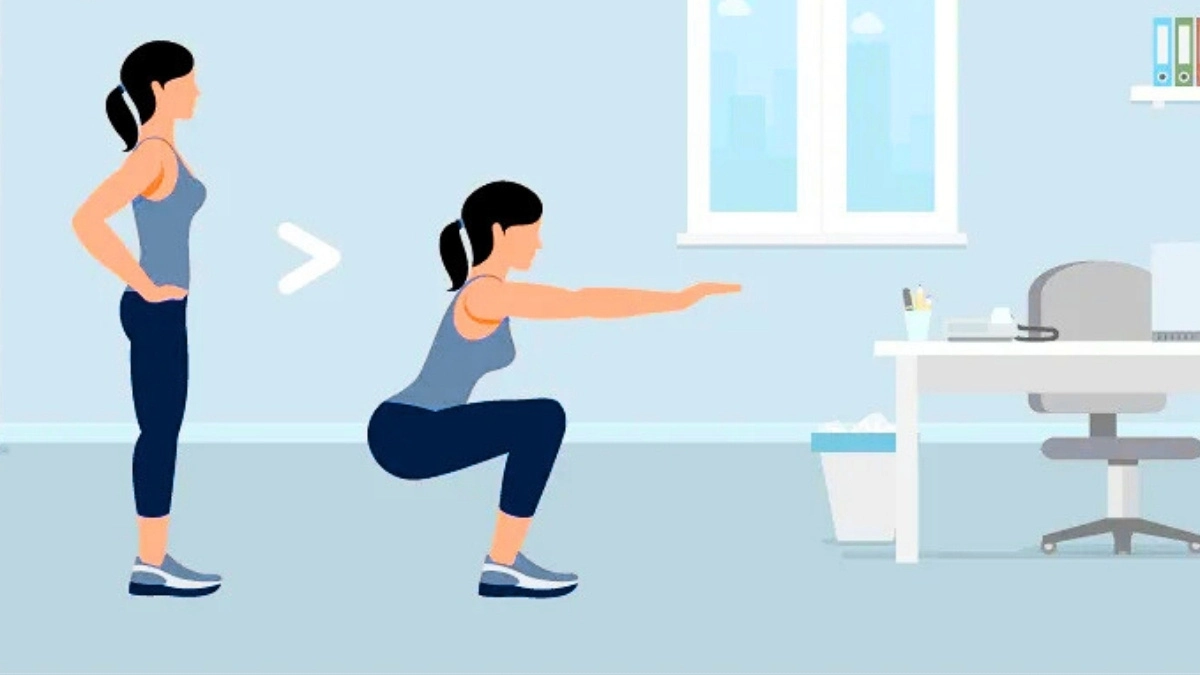
If you can’t reach parallel with your thighs without your heels lifting or your back rounding, your hip hinge needs work. Try touching your toes while keeping your legs straight – if your hands don’t reach below your knees, tight hamstrings are limiting your movement.
Notice if you feel the stretch in your back instead of your legs. This simple assessment reveals exactly where your body needs the most attention and gives you a baseline to track your progress.
Quick Tips:
- Practice the hip hinge movement 10 times each morning to improve your pattern
- Use a wall behind you as a guide – your hips should touch it first when hinging back
- Film yourself from the side to see exactly what your body is doing during the movement
6. The Tight Hip Flexor Conspiracy
These hidden muscles attach from your thigh bone all the way up to your spine, creating problems far beyond your hips. Most people blame their back pain on weak abs or poor posture, but tight hip flexors are often the real villain.
Sitting shortens these muscles hour by hour, day after day, until they pull your pelvis forward and compress your lower back. When hip flexors stay contracted, they shut down your glutes and force your back muscles to work overtime. Standing up becomes difficult because these tight muscles resist the movement.
Walking feels stiff because your stride length decreases. Even lying down can be uncomfortable as these muscles refuse to relax fully. Breaking this cycle requires targeted stretching and conscious movement changes throughout your day.
Quick Tips:
- Perform a kneeling hip flexor stretch for 30 seconds on each side every morning
- Squeeze your glutes hard for 3 seconds after standing up from any seated position
- Sleep on your back occasionally to give your hip flexors a chance to lengthen overnight
7. Your Glutes: The Sleeping Giants That Need to Wake Up
Your glute muscles are the largest and strongest in your body, designed to power every step you take. Modern life has put these powerhouse muscles into a deep sleep, leaving weaker muscles to pick up the slack. Sitting on them all day teaches them to turn off completely.
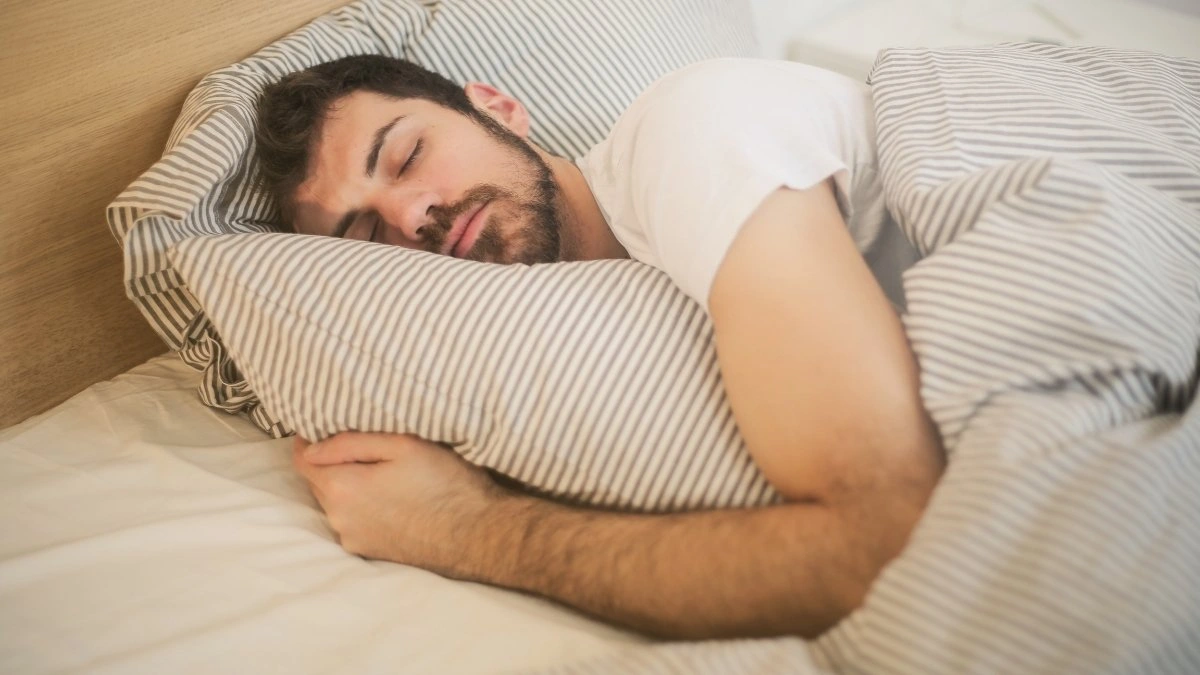
When glutes don’t fire properly, your hamstrings and lower back become overworked and painful. Hip hinging becomes nearly impossible without strong, active glutes to control the movement. These muscles also stabilize your pelvis and protect your knees during walking and running.
Waking them up requires specific activation exercises that retrain your nervous system. Once they start working again, movement becomes smoother and more powerful than you ever imagined possible.
Quick Tips:
- Do glute bridges every morning by lying on your back and lifting your hips toward the ceiling
- Walk up stairs by focusing on pushing through your heels instead of your toes
- Stand on one foot for 30 seconds to force your glutes to work for stability
8. The Daily Movement Crimes You’re Committing (Without Knowing It)
Simple activities become harmful when done with poor movement patterns that your body has learned over years. Bending to pick up objects by rounding your spine puts enormous pressure on your discs and joints. Getting out of bed by sitting straight up instead of rolling to your side strains your back unnecessarily.
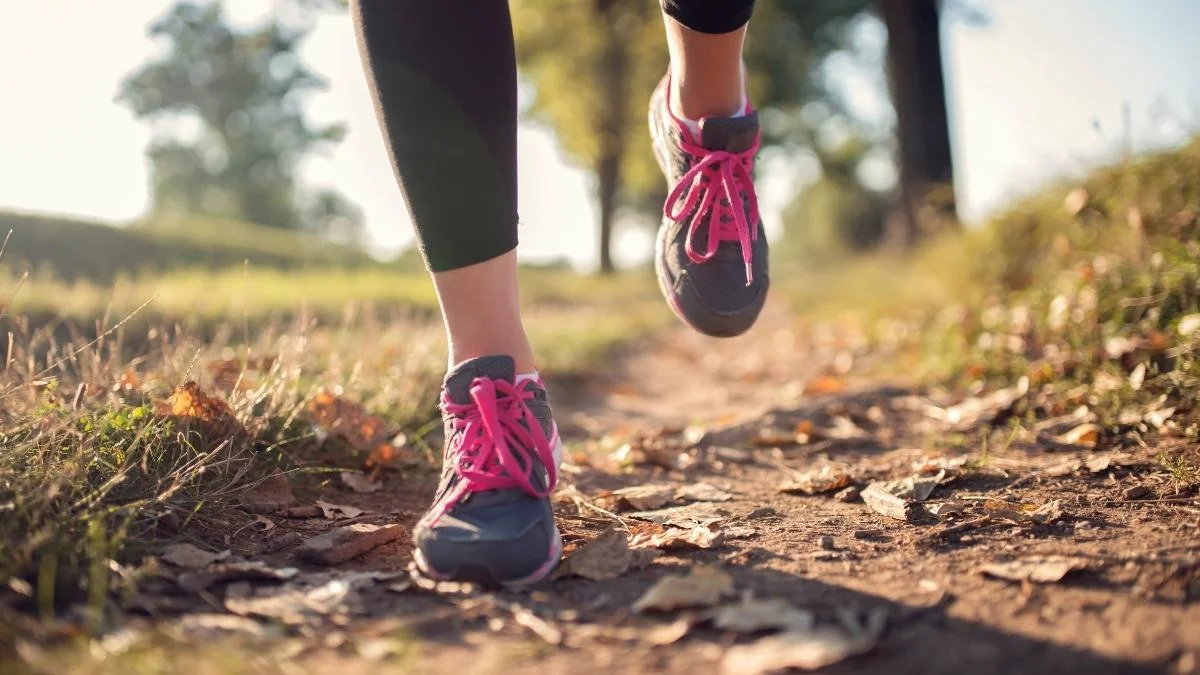
Lifting groceries, laundry baskets, or children while keeping your legs straight forces your spine to bear all the load. Even walking becomes problematic when you shuffle your feet or lean forward excessively. Carrying bags on one shoulder creates muscle imbalances that throw off your entire posture.
Climbing stairs by pulling yourself up with the handrail instead of pushing through your legs weakens your glutes further. Recognizing these patterns is the first step toward changing them.
Quick Tips:
- Squat down to pick up objects by bending your knees and pushing your hips back
- Roll to your side before sitting up in bed to protect your spine
- Carry heavy items close to your body and switch sides frequently to maintain balance
9. The Foundation Fix: Core Stability Meets Hip Mobility
Your core and hips work as a team to create stable, powerful movement throughout your body. A weak core forces your hip muscles to work overtime for stability, leading to tightness and dysfunction.
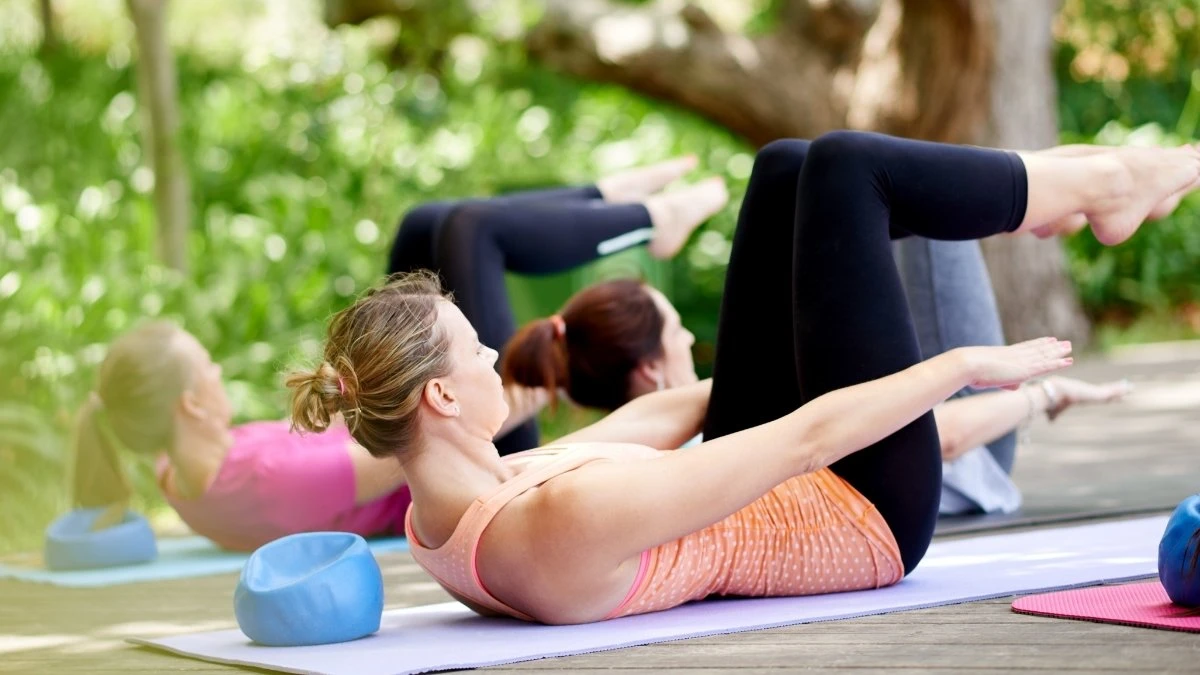
Conversely, immobile hips make your core muscles work inefficiently and create compensation patterns. This relationship explains why traditional sit-ups often make back pain worse instead of better. True core strength comes from learning to breathe properly while maintaining a neutral spine position.
Hip mobility allows your core to work from a stable base instead of constantly fighting to maintain balance. Training both systems together creates dramatic improvements in posture and pain levels. The key is learning to move your hips independently of your spine while keeping your core engaged.
Quick Tips:
- Practice breathing deeply into your belly while holding a plank position for 20 seconds
- Do bird dog exercises by extending opposite arm and leg while keeping your spine still
- Hold a wall sit while performing arm movements to train core stability with hip positioning
10. The 5-Minute Morning Routine That Changes Everything
Starting your day with targeted movements sets the tone for better posture and pain-free movement. Just five minutes of specific exercises can undo hours of damage from sleeping in poor positions. Your body needs gentle awakening after being stationary for 6-8 hours in bed.
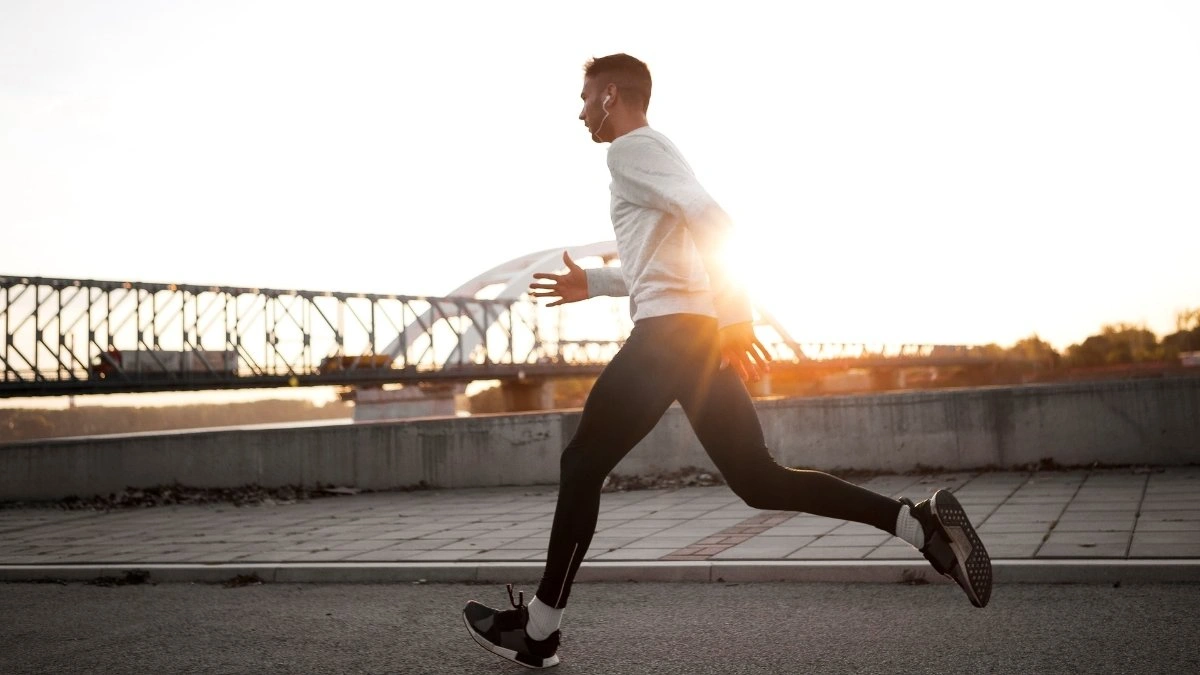
This routine focuses on lengthening tight muscles, activating sleepy ones, and preparing your movement patterns for the day ahead. Begin with gentle spinal movements to increase blood flow and joint mobility. Follow with hip flexor stretches to counteract the shortened position from sleeping.
Activate your glutes with simple bridging movements to remind them how to work. End with practice hip hinge movements to reinforce proper patterns before you start bending and lifting throughout your day.
Quick Tips:
- Set your alarm 5 minutes earlier to make time for this routine without rushing
- Keep your movements slow and controlled rather than fast and aggressive
- Focus on quality over quantity by doing fewer repetitions with better form
11. The Walking Revolution: How Proper Hip Hinges Transform Your Gait
Walking becomes effortless when your hips move freely and your body works as nature intended. Mobile hips allow your legs to swing naturally from your pelvis instead of compensating through your lower back. Each step flows smoothly into the next without jarring impacts or wasted energy.
Proper hip function eliminates the shuffle-step that makes people look and feel older than their years. Your stride lengthens naturally as your hip flexors and extensors work through their full range of motion. Energy transfers efficiently from one leg to the other, reducing fatigue during longer walks.
Arms swing freely as your torso stays stable and upright. Even your breathing improves when your ribcage isn’t restricted by poor posture and compensatory movement patterns.
Quick Tips:
- Focus on pushing off with your back foot instead of reaching forward with your front foot
- Let your arms swing naturally without forcing the movement or holding them rigid
- Take longer, slower steps rather than short, quick ones to encourage full hip extension
12. The Strength-Flexibility Balance That Most People Get Wrong
Stretching tight muscles without strengthening weak ones creates temporary relief that never lasts. Your body needs both mobility to move freely and stability to control that movement safely. Most people focus only on stretching their tight areas while ignoring the weak muscles that caused the tightness in the first place.
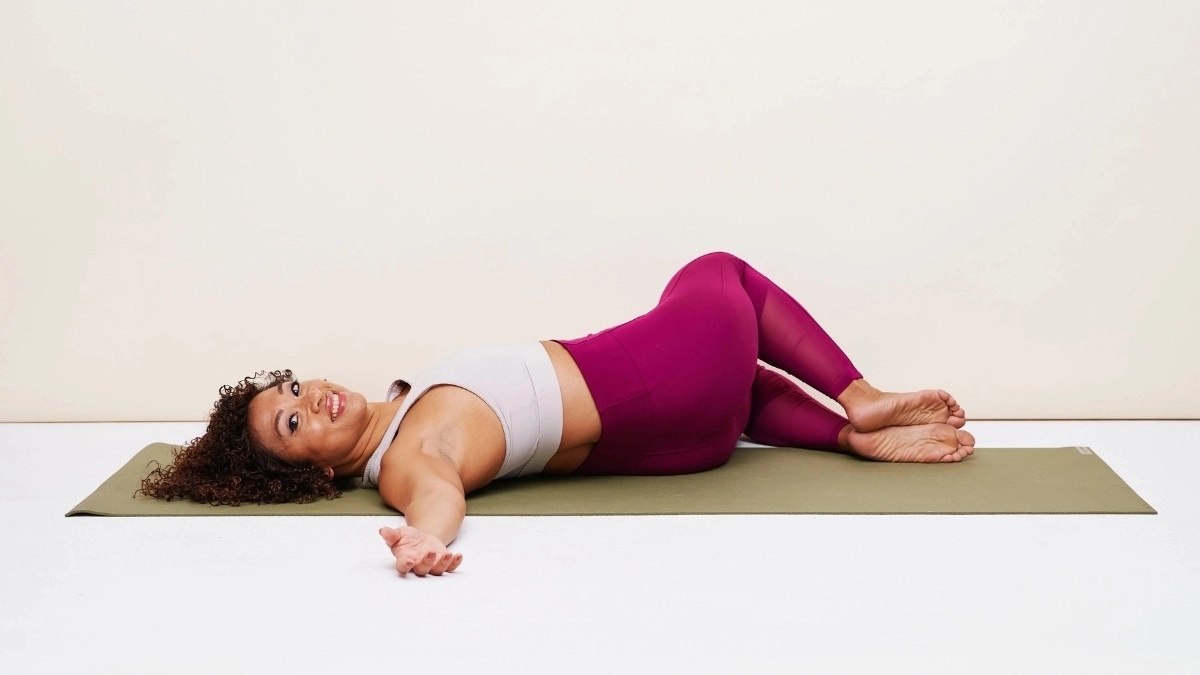
This approach leads to a frustrating cycle where problems keep returning no matter how much you stretch. Strong muscles that can lengthen under control provide lasting flexibility. Weak, overstretched muscles become unstable and prone to injury.
The solution involves strengthening muscles in their lengthened positions while teaching them to work together efficiently. Building functional strength through full ranges of motion creates the balance your body craves.
Quick Tips:
- Combine stretching with strengthening by holding stretches and adding gentle resistance
- Work your weakest muscles twice as much as your strongest ones to restore balance
- Test your strength at the end ranges of motion where most injuries occur
13. The Mind-Body Connection: How Better Movement Improves Mental Clarity
Physical posture directly influences mental state in ways that most people never realize. Standing tall with proper hip alignment increases confidence and reduces stress hormones like cortisol. Better breathing patterns from improved posture deliver more oxygen to your brain.
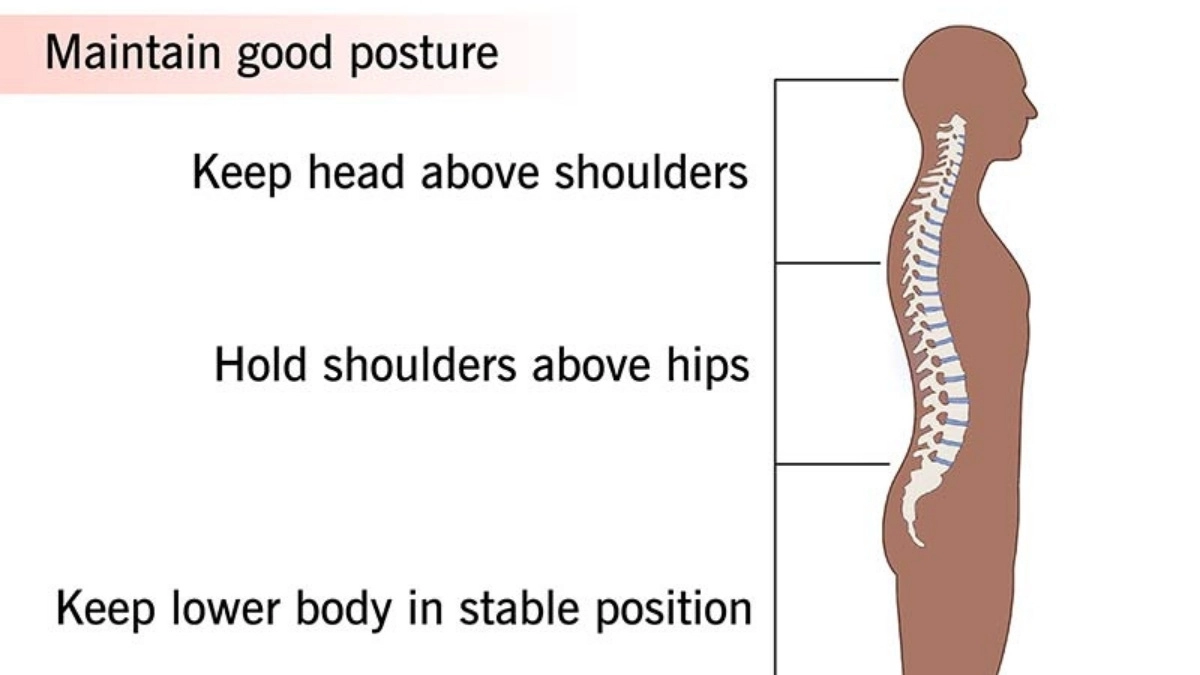
When your body moves efficiently, your mind feels clearer and more focused throughout the day. Chronic pain from poor movement creates mental fog and emotional stress that affects everything you do.
Your nervous system calms down when it doesn’t have to constantly fight against gravity and poor alignment. Even your sleep quality improves as your body learns to truly relax instead of guarding against pain.
Quick Tips:
- Notice how your mood changes when you stand taller and pull your shoulders back
- Take three deep breaths whenever you catch yourself slouching to reset both posture and mindset
- Pay attention to how much clearer you think after doing movement exercises
14. Debunking the Myths: What You’ve Been Told About Hip Health Is Wrong
Many common beliefs about hip problems actually make things worse instead of better. The myth that you should avoid bending forward leads to stiff, immobile hips that can’t function properly.
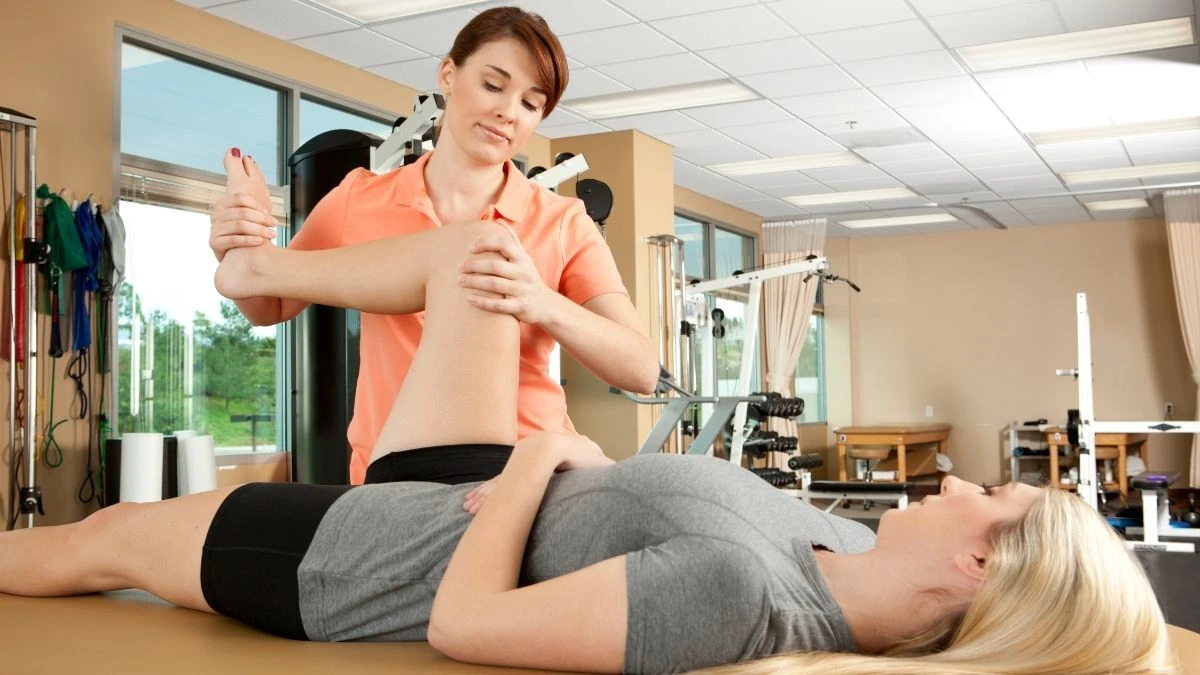
Age doesn’t automatically mean hip problems if you maintain good movement patterns throughout your life. Expensive equipment and complicated routines are unnecessary when simple, consistent movements work far better.
The idea that genetics determine your flexibility ignores the massive improvements possible through proper training. Pain doesn’t always mean damage, and avoiding all discomfort prevents necessary adaptations from occurring.
Quick Tips:
- Move your hips through their full range of motion daily instead of avoiding certain movements
- Focus on consistency over intensity when working on hip mobility improvements
- Question any advice that tells you to completely avoid natural human movements
15. The Long-Term Vision: Building Hip Health That Lasts a Lifetime
Sustainable improvement comes from building habits that become second nature, not from short-term intensive programs. Small, consistent changes compound over time to create dramatic transformations in how your body moves and feels. Your future self depends on the movement choices you make today.

Creating systems that work with your lifestyle ensures that good habits stick even when motivation fades. Start with the easiest changes first and gradually add more challenging elements as your body adapts. Track your progress through how you feel during daily activities rather than just formal exercise sessions.
Teach these principles to your family and friends to create a supportive environment for lasting change. Remember that building hip health is an investment that pays dividends for decades to come.
Quick Tips:
- Choose one simple hip mobility exercise and do it at the same time every day for 30 days
- Set reminders on your phone to check your posture and do movement breaks throughout the day
- Measure progress by how easily you can tie your shoes, not just how much you can stretch
Final Thought:
Your hip hinges hold the key to transforming how your body moves, feels, and functions every single day. These simple movement patterns can eliminate chronic pain, improve your posture, and give you the effortless mobility you thought was lost forever.

The best part is that small, consistent changes create massive improvements over time without requiring expensive equipment or complicated routines. Start with just one or two techniques from this guide and build from there as your body begins to remember how it was meant to move.
Your future self will thank you for taking action today instead of waiting for tomorrow to begin this life-changing journey.


